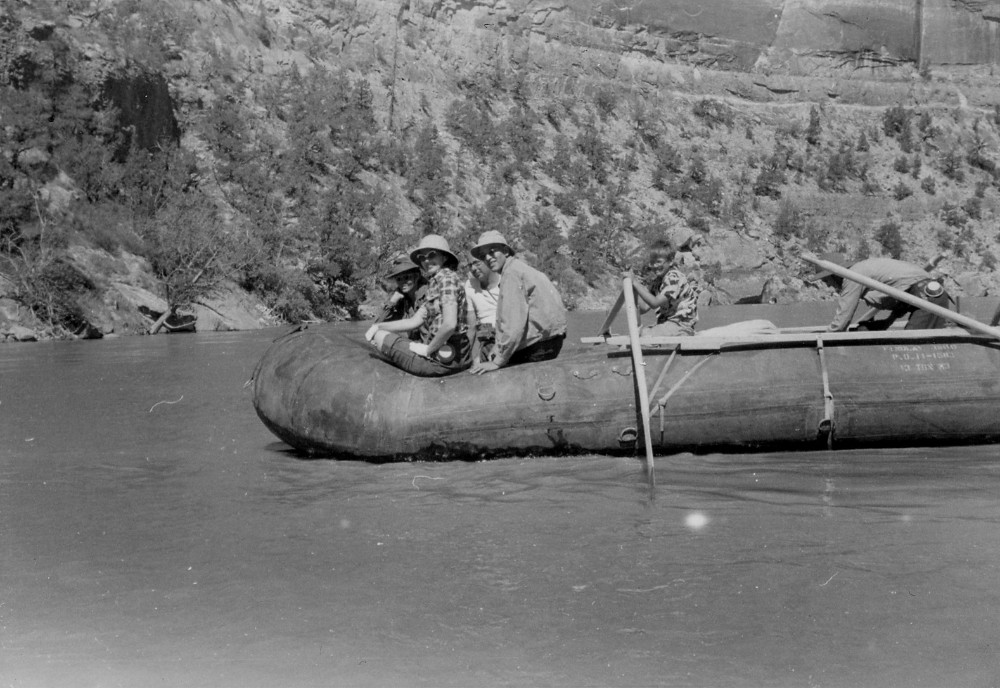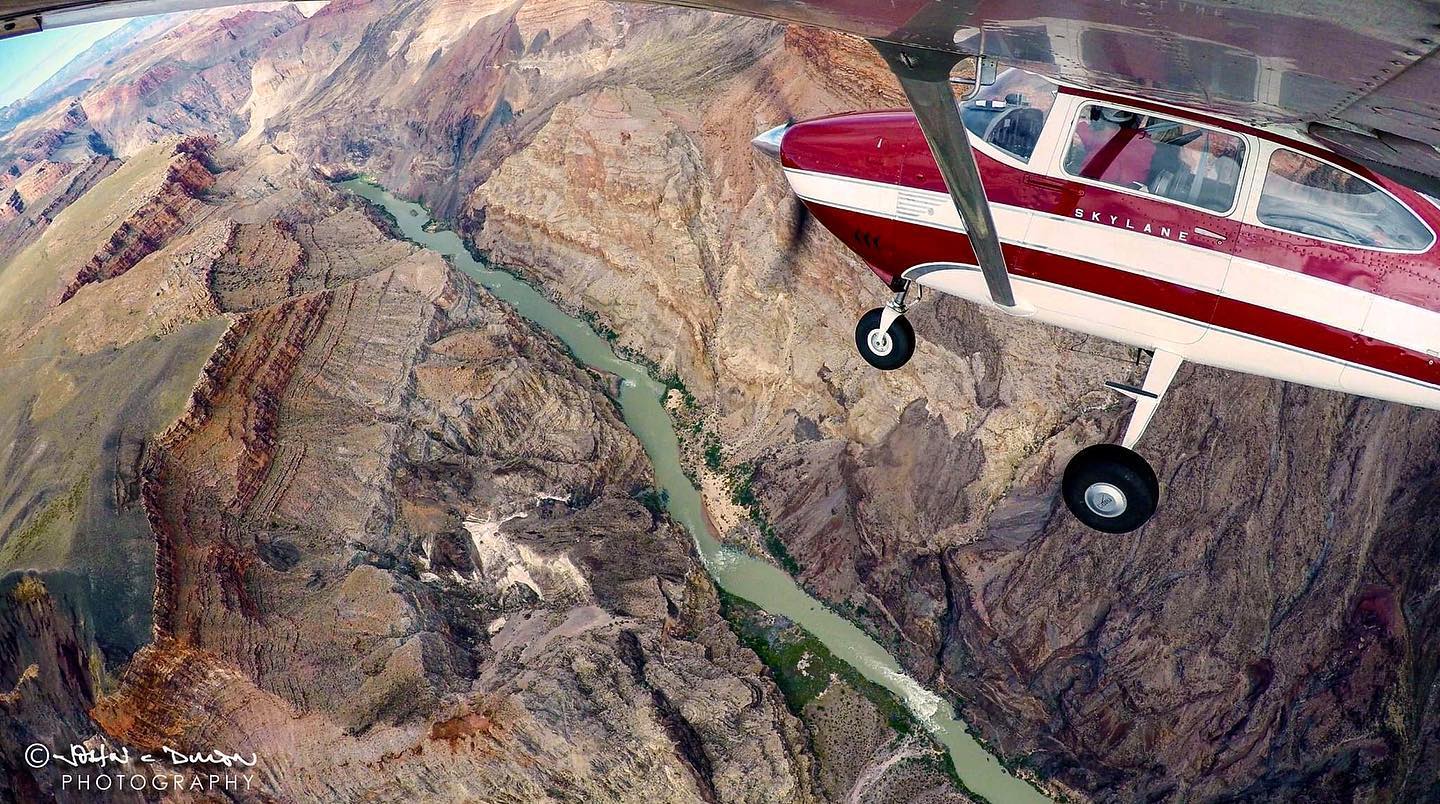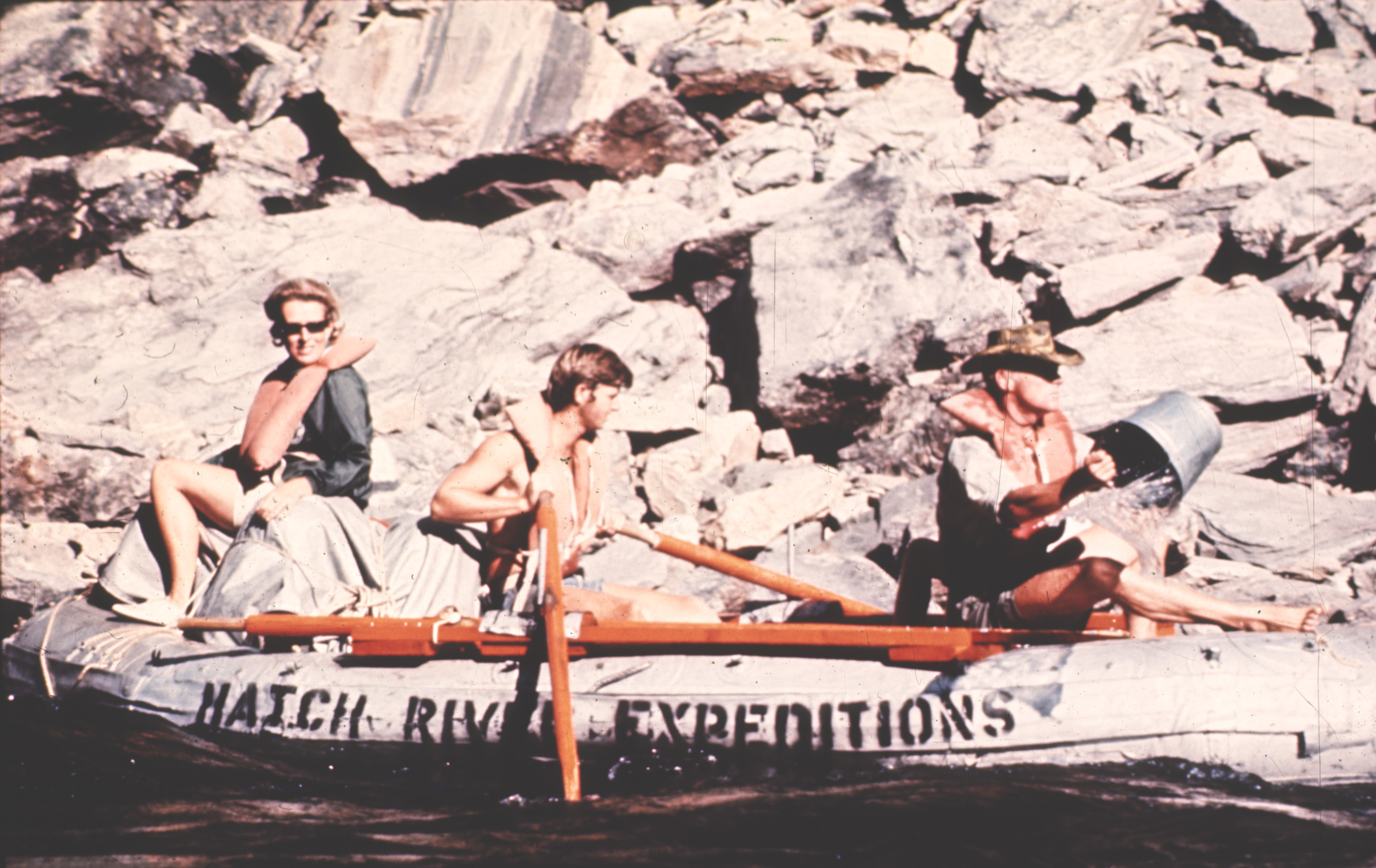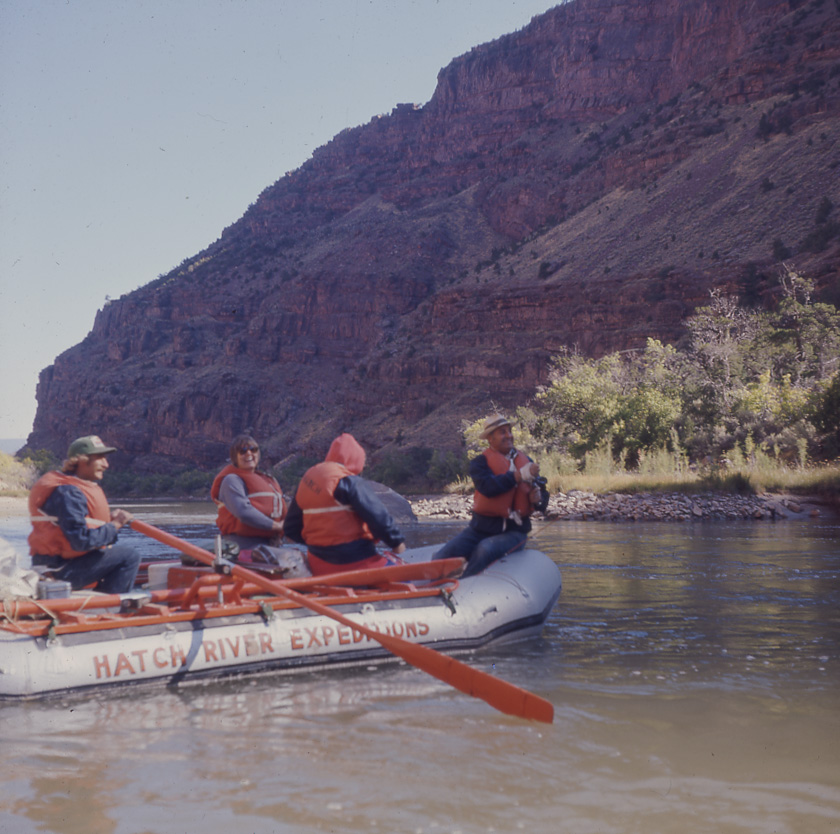Flashback Friday: 1984 Ted Hatch Interview – Part 2
On the origins of the Hatch family in Utah and how the motorized rafts came to be used in Grand Canyon
This week, “Flashback Friday” continues with the interview between Elizabeth F. Sowards and Ted Hatch. The interview took place on June 20, 1984. He talks about the Hatch family history in Utah, the history of the motorized rafts we use today, and recalls taking a car down the river for a Ford commercial!
E. Sowards: Now, let’s see…your mother was Eva?
Ted: Eva Caldwell. She was from some descendants here in Ashley Valley that settled Dry Fork. My dad was from Jeremiah Hatch who helped settle and found the area called Hatchtown which later became Vernal.
E. Sowards: So he was your great-grandfather? Or grandfather?
Ted: Great-grandfather.
E. Sowards: I think Orrin Hatch the Senator, is a descendant of the same man on another line, isn’t he?
Ted: Yes. He is a descendant from the original Hatch family. We are all related, if we go far enough back.
E. Sowards: Well, that’s a great family! Explain to me your pontoon boats, if I describe those, I’d like more of a legal description of them than I know. (Laughs) I know they were used for bridges.
Ted: Sure. They were designed in World War II for bridge pontoons. When the military people came up to a river that they couldn’t cross with their tanks and heavy artillery and trucks they used these great big inflatable rafts. They will have twelve or fourteen compartments in them, so that if one leaks, they still stay afloat. Then the military would run a metal track across the top and they could…just by inflating a dozen of these rafts…they had had a portable bridge, so then they could run their troops across the river without it being a real barrier to them in advance. After the war these pontoons became readily available through war surplus stores at a very low price compared to what it cost the government to build them. They were also very good at running rapids, because they float so high in the water, and they only draw about two or three inches down in the water where a wooden boat sinks with every pound that you put in it until it is down, deep. The rubber boats that we use are 33 feet long and with the tubes on the side they are 14 feet wide.
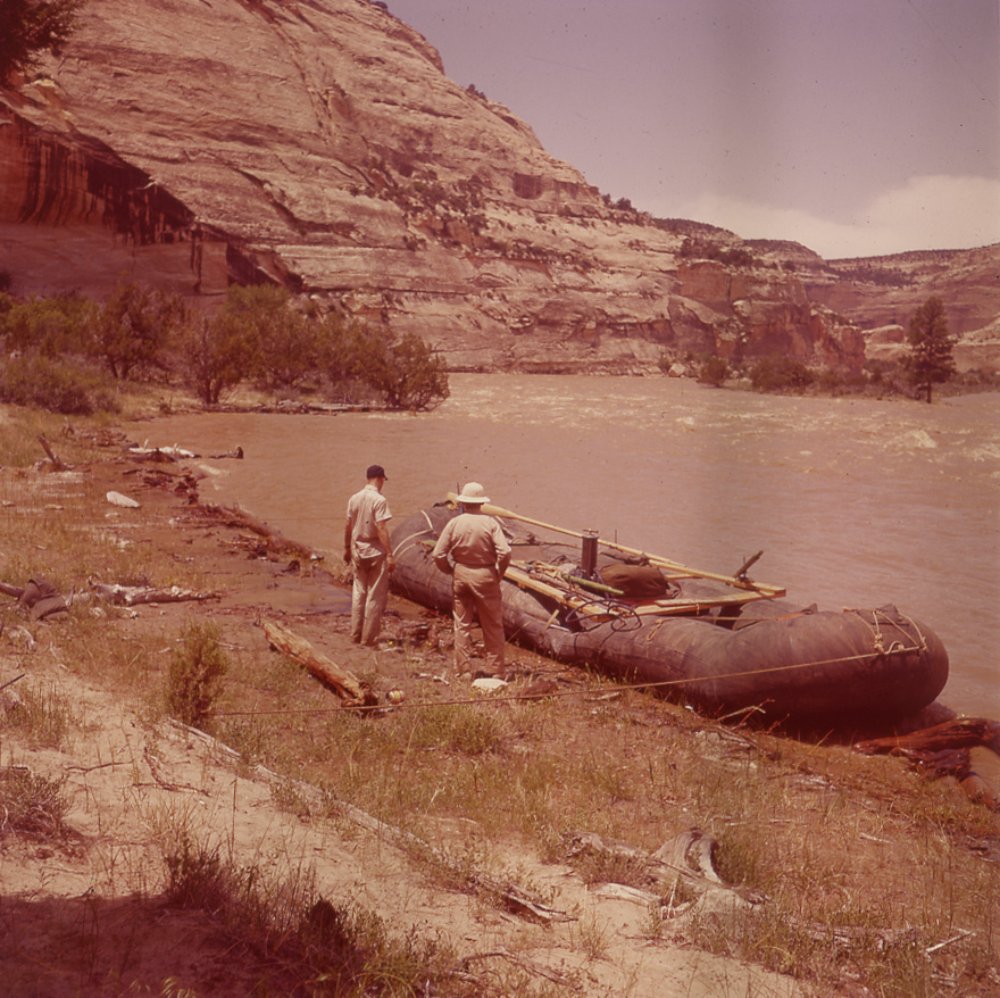
Post WWII, military surplus supplies were plentiful and cheap. Built to string together into a temporary bridge big enough for large military equipment to driver over, these pontoons were perfect for rafting the Colorado River due to how high they sat on the water and their flexibility through the rapids. Here, two men look at a raft rig in the 1950s.
E. Sowards: I was those tubes…they are just called tubes?
Ted: Side tubes. They will float about 13 tons.
E. Sowards: So they really take the weight!
Ted: I have actually loaded a car on one of them, and hauled it. I took it through from Diamond Creek in the bottom of the Grand Canyon to Lake Mead for a publicity advertisement for Ford. We took it in 1964.
E. Sowards: Oh, that’s interesting!
Ted: The theme then was, “Ride the Crest of the Wave With a Ford!” So we put one on the raft, and made it to look like wood, you know. We put logs around the sides and ran some rapids for a TV commercial. We worked a month doing that. It was on TV about a minute, or a minute and a-half. [Note: We unsuccessfully tried to find a video of the ad.]
E. Sowards: And you worked a month for that minute (Laughs).
We hope Ted’s works can be enjoyed by many relating to Grand Canyon white water rafting trips. The Hatch family has been exponentially influential in the rafting community for decades. Reading up on the history provides just a glimpse into the heyday of river running. Ted and his brother Don are being inducted into the River Runners Hall of Fame on October 5th, 2024. More about that later this season!
Thanks for reading and be sure to check back for the next few Friday’s with more from Ted. Look for more in upcoming blogs about rafting Colorado River and preparing for your next Grand Canyon adventure.
Book your 2024 or 2025 river trip today! Get your 90th Year T-shirt or sticker!
